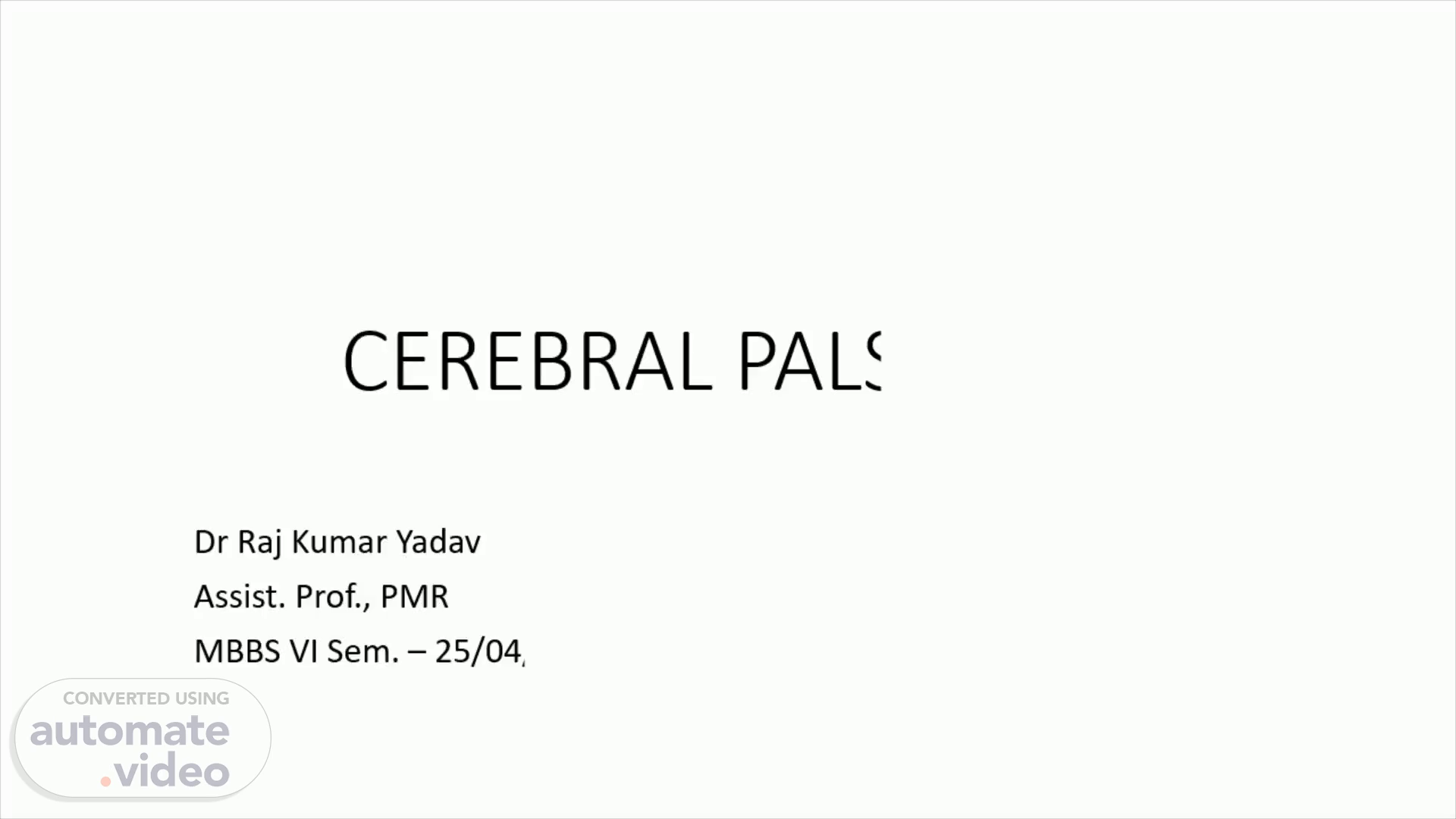Page 1 (0s)
CEREBRAL PALSY (CP). Dr Raj Kumar Yadav Assist. Prof. , PMR MBBS VI Sem. – 25/04/2019.
Page 2 (10s)
DEFINITION. C linical syndrome has three important criteria - 1. Motor dysfunction. 2. Non progressive brain damage. 3. Affecting an immature developing brain. other areas of brain in addition to motor areas impairments of vision, communication, cognition, mental functions, seizures etc. during prenatal, during the delivery or postnatal period ..
Page 3 (27s)
DEFINITION. “Cerebral palsy describes a group of permanent disorders of the development of movement and posture, causing activity limitation; those are attributed to nonprogressive disturbances that occurred in the developing foetal or infant brain. The motor disorders of CP are often accompanied by disturbances of sensation, perception , cognition, communication, behaviour, by epilepsy and by secondary musculoskeletal problems”. Bax et al. 2005 and Rosenbaum.
Page 4 (47s)
RISK FACTORS. A. Prenatal Period: Pre term (below 36 weeks) low birth weight (below 2000gms) TORCH infection bleeding at third trimester pre- eclamsic toxaemia twins and multiple pregnancies.
Page 5 (58s)
RISK FACTORS. B. N atal Period: Prolonged labour pains rupture of placental membrane outside and the time delay from rupture to delivery (if there is delay the child is exposed to infections) Abnormal presentations like breech severe hypoxia, bradycardia etc.
Page 6 (1m 12s)
RISK FACTORS. C. Post natal period: Post encephalitis (both viral and bacterial) severe hypoxia Seizures bleeding disorders, neonatal jaundice and Traumatic brain injury etc. The exact time period to label a child with CP due to post natal involvement is variable - 3 - 5 years.
Page 7 (1m 26s)
PATHOLOGY. Encephalocele where a part of the brain is not developed Microcephaly or M acrocepahly - proliferation of neurons smooth brain with no gyri known as Lissencepahly , or many small gyri producing Polymicrogyria Agenises of cortex Intra ventricular Haemorrhage (IVH ) Cyst formations in the cortex Normal brain structure.
Page 8 (1m 41s)
CLASSIFIACTION. based on tone changes - 1. SPASTIC TYPE (75 %)— signs of upper motor neuron involvement Hyperreflexia , Clonus, Extensor Babinski response (abnormal at > 2 years) Persistent primitive reflexes 2. HYPOTONIC TYPE — Deep tendon reflexes are weak unable to maintain the posture show hyper mobility sometimes ..
Page 9 (1m 57s)
CLASSIFIACTION. 3. DYSKINETIC TYPE — extra pyramidal involvement movement abnormal regulation of tone, defects in postural control and coordination deficits A. Athetoid or slow writhing involuntary movements - in the distal extremities B. Chorea —Abrupt, irregular jerky movements, usually occurring in the head, neck, and extremities C. Choreoathetoid —Combination - Generally large-amplitude involuntary movements. The dominating pattern is the athetoid movement D. Dystonia —A slow rhythmic movement with tone changes generally found in the trunk and extremities, associated with abnormal posturing E. Ataxia —Unsteadiness with uncoordinated movements, often associated with nystagmus, dysmetria , and a wide-based gait.
Page 10 (2m 24s)
CLASSIFIACTION. 4. MIXED TYPE : This includes descriptions from both spastic and dyskinetic classifications. e.g., - spastic athetoid (predominant dyskinetic movement pattern with underlying component of spasticity).
